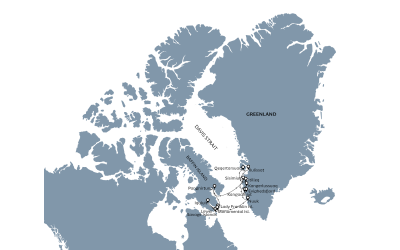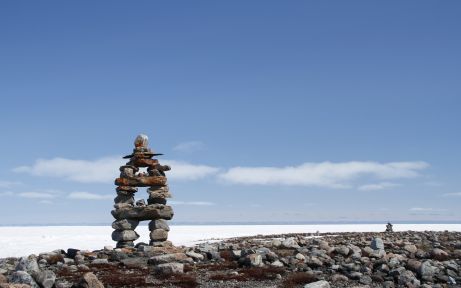Northern Lights
Kangerlussuaq is one of the best places to witness the mesmerizing glow of the Northern Lights, or Aurora Borealis, thanks to its relatively stable climate, limited use of streetlights and nearly 300 days of clear skies each year. You can be captivated by this beautiful kaleidoscope of colors during the months of September to April, when the Northern Lights are strongest.
Gazing upward beneath Kangerlussuaq's starry skies, you are likely to see brilliant, green bands or flapping curtains of color waving across the celestial sphere. Shades of red, blue and violet are likely as well. This ethereal light display is the result of a scientific phenomenon where gaseous protons and electrons from solar wind collide with molecules in Earth’s atmosphere.
Color variations are due to the type of gas particles that collide, as well as the altitude at which they collide. Oxygen molecules at lower altitudes of up to 241 km (150 mi) produce the most common color, a yellowy green; then deepen to shades of red above 241 km (150 mi) high. Nitrogen produces blue hues at altitudes up to 96.5 km (60 miles); and vivid purples above 96.5 km (60 miles).
It's such a beautiful and captivating sight, even residents of Greenland never grow tired of the display, but instead can be seen gazing in wonder. Beyond the scientific explanations and solar forecasts, the Northern Lights hold so much more meaning in Greenlandic culture. The phenomena is linked to time-honored stories and superstitions, which are still passed from generation to generation.
Learn more about the northern lights and other activities at Albatros Arctic Circle.





